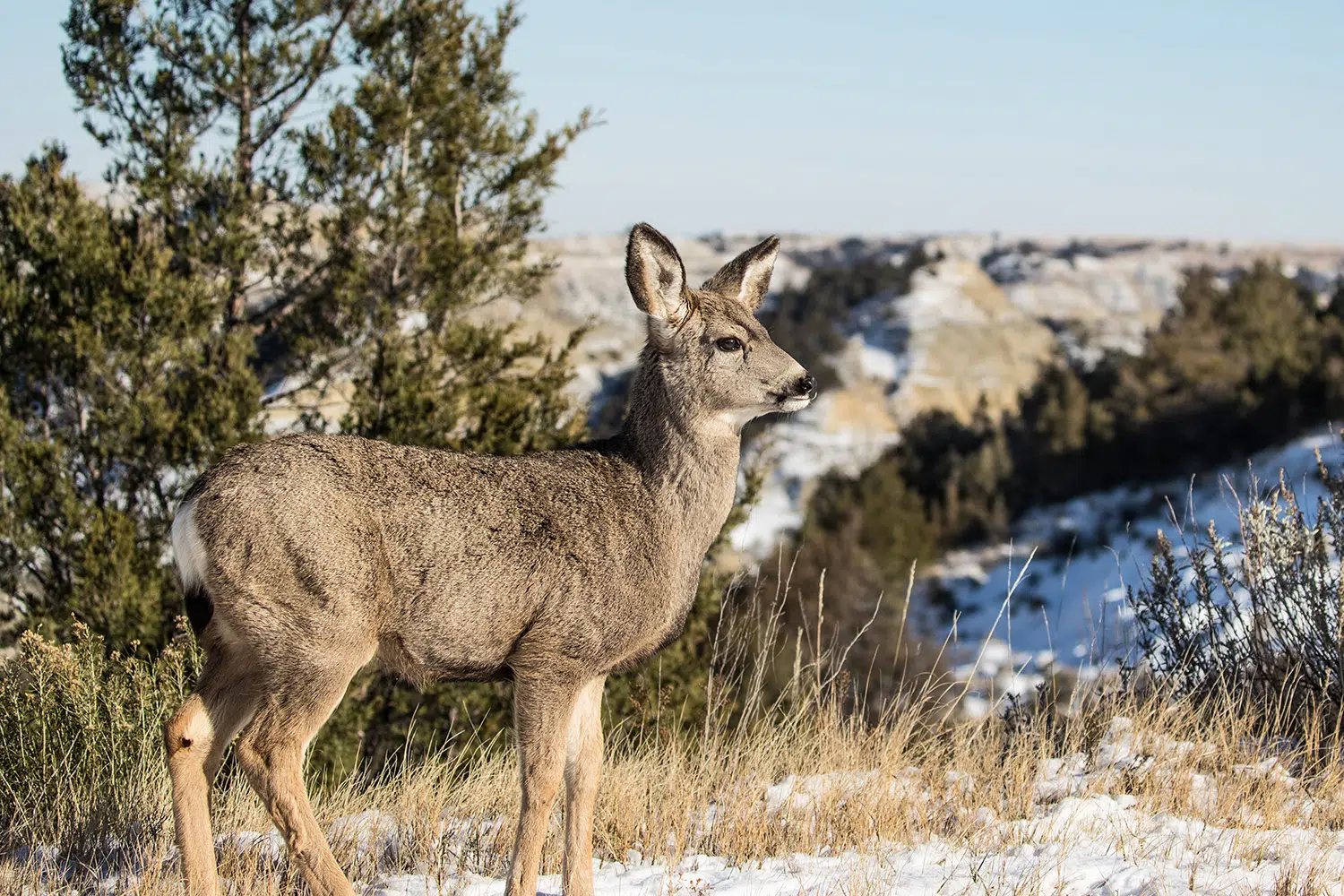
Mule Deer in Theodore Roosevelt National Park, North Unit, Nov. 7, 2017
The North Dakota Game and Fish Department completed its annual spring mule deer survey in May, and results indicate western North Dakota’s mule deer population is 13% higher than last year and 34% above the long-term average.
Biologists counted 2,923 mule deer in 298.8 square miles during this year’s survey. The overall mule deer density in the badlands was 9.8 deer per square mile.
Big game management supervisor Bruce Stillings said he is encouraged with current mule deer densities across the badlands.
“The spring index was higher than 2021 despite having very poor fawn production,” Stillings said. “Although fawn production was low due to extreme drought, habitat in the badlands was still in a condition able to provide high over-winter survival, leading to a slight population increase in 2022.”
Stillings said the 2022 spring survey was the longest on record due to two April blizzards.
“These two blizzards produced approximately 40 inches of snow with high winds and low temperatures,” he added. “The effects of these storms will not be understood until upcoming surveys are completed.”
The spring mule deer survey is used to assess mule deer abundance in the badlands. It is conducted after the snow has melted and before trees begin to leaf out, providing the best conditions for aerial observation of deer. Biologists have completed aerial surveys of the same 24 study areas since the 1950s.




Comments